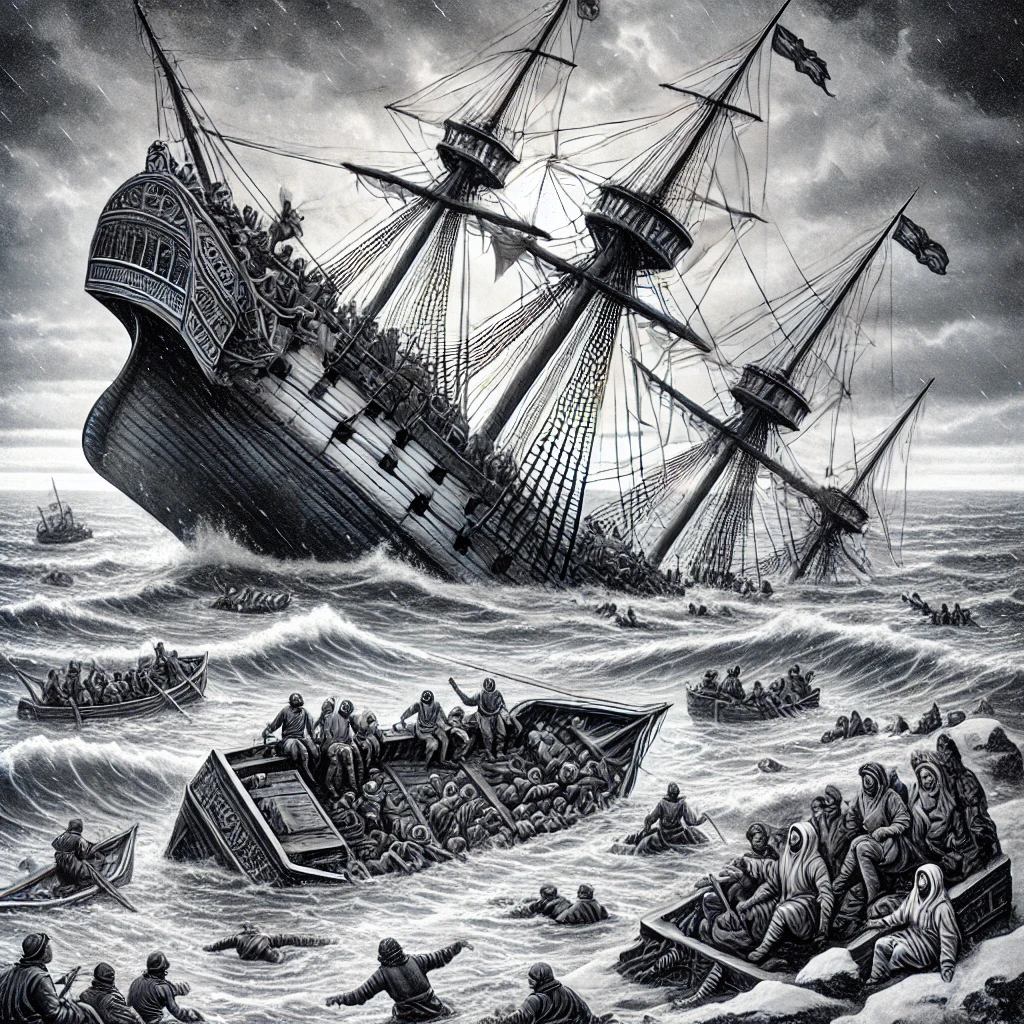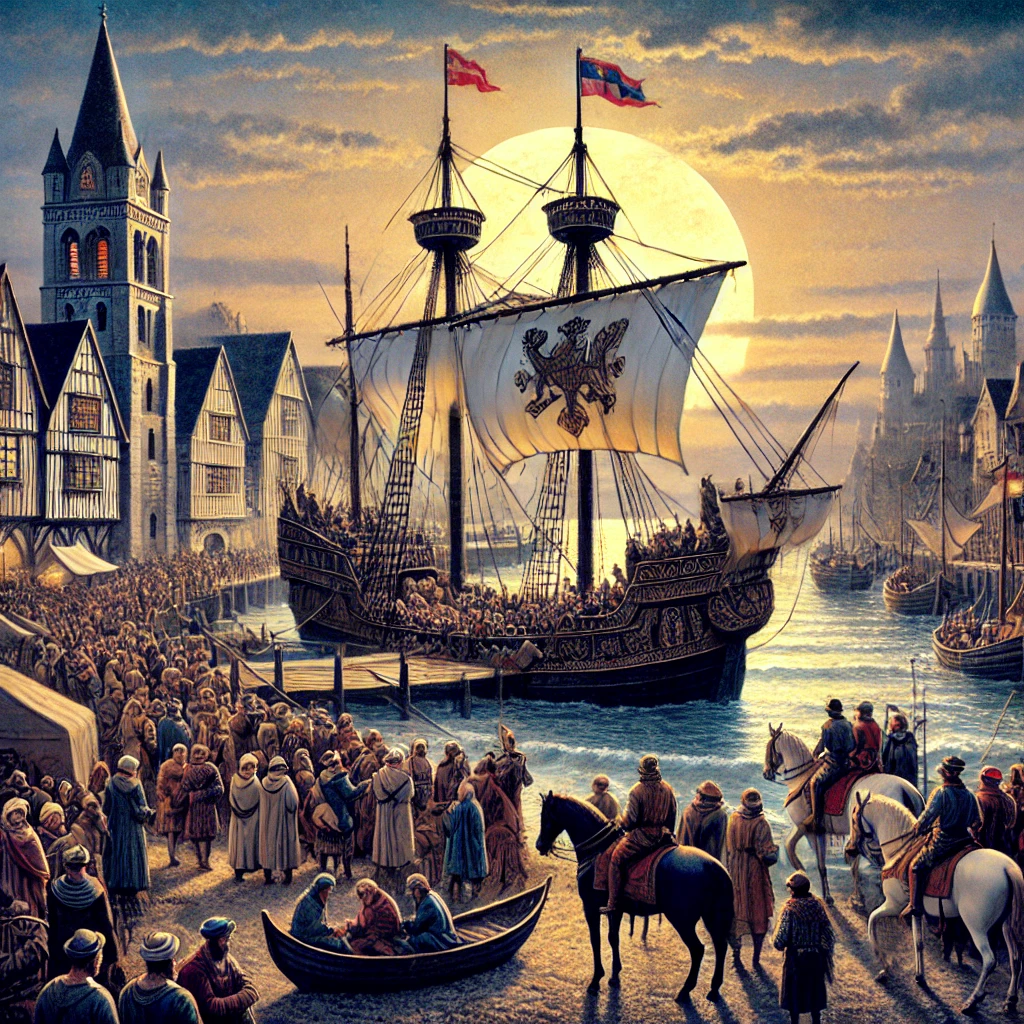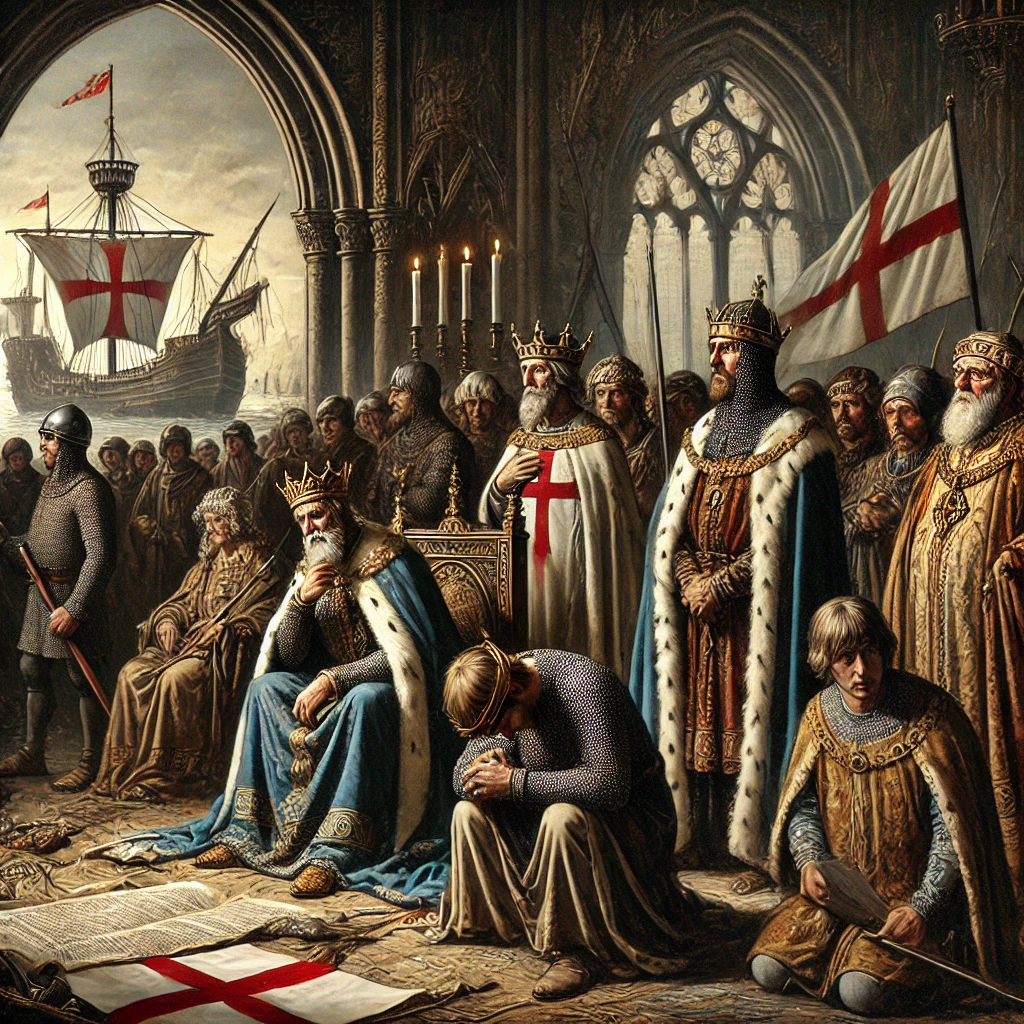On November 25, 1120, tragedy struck the English monarchy and nobility when the White Ship sank in the icy waters of the English Channel near Barfleur, Normandy. This catastrophic event claimed the lives of approximately 300 passengers, including William Adelin, the sole legitimate heir of King Henry I. The sinking of the White Ship not only devastated families but also plunged England into political chaos, marking a pivotal turning point in medieval history.

The Fateful Voyage
The White Ship was a state-of-the-art vessel owned by Thomas FitzStephen, whose family had long served English kings. On that fateful evening, a festive atmosphere surrounded the ship as passengers, including William Adelin, members of the nobility, and their entourages, celebrated before setting sail. Accounts suggest that excessive drinking among the crew and passengers contributed to the vessel’s ill-fated departure. Tragically, the ship struck a submerged rock shortly after leaving the harbor, causing it to capsize rapidly.
Efforts to save passengers were largely unsuccessful. William Adelin initially managed to board a lifeboat but reportedly returned to rescue his half-sister Matilda FitzRoy, resulting in his death. Only one man, a butcher named Berold, survived to recount the horror. The loss of so many prominent figures in one night had far-reaching implications for the English monarchy.

The Anarchy: A Nation in Turmoil
The death of William Adelin left King Henry I without a clear male heir, sparking a succession crisis. Although Henry named his daughter, Empress Matilda, as his successor, the idea of a female ruler was met with resistance from the Anglo-Norman barons. Upon Henry’s death in 1135, his nephew, Stephen of Blois, seized the throne, plunging England into a period of civil war known as The Anarchy.
For nearly two decades, England was gripped by conflict, with rival factions vying for power. The instability weakened royal authority, disrupted trade, and led to widespread suffering. Although the conflict ended with the Treaty of Wallingford in 1153, which recognized Matilda’s son Henry II as Stephen’s heir, the Anarchy left lasting scars on the English realm.
A Legacy of Tragedy and Change

The White Ship disaster remains a stark reminder of how unforeseen events can alter the course of history. The loss of William Adelin and the resulting power struggles shifted the trajectory of English governance, laying the groundwork for future reforms. The period of instability highlighted the vulnerabilities of hereditary succession and eventually influenced the development of more structured systems of governance, including the Magna Carta in 1215.
Today, the story of the White Ship continues to fascinate historians and enthusiasts of medieval history. It underscores the fragility of dynasties and the far-reaching consequences of a single tragedy. The disaster also serves as a poignant reflection on the human cost of political upheaval and the enduring quest for stability and order in society.
As we reflect on this day in history, the sinking of the White Ship stands as a powerful illustration of how a single moment can echo through centuries, shaping the destinies of nations and people alike.
